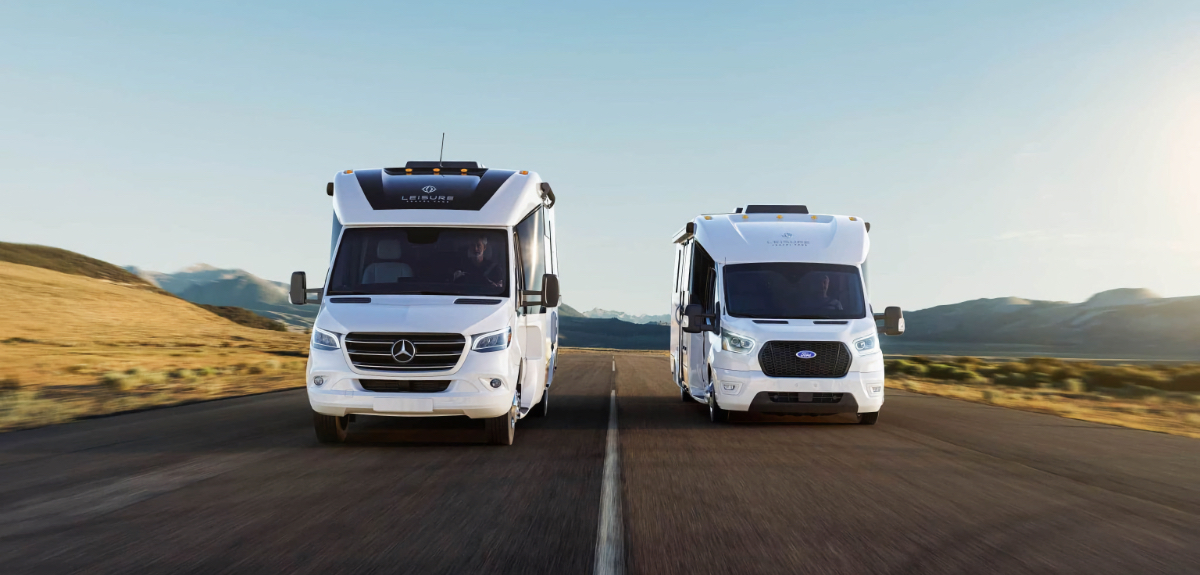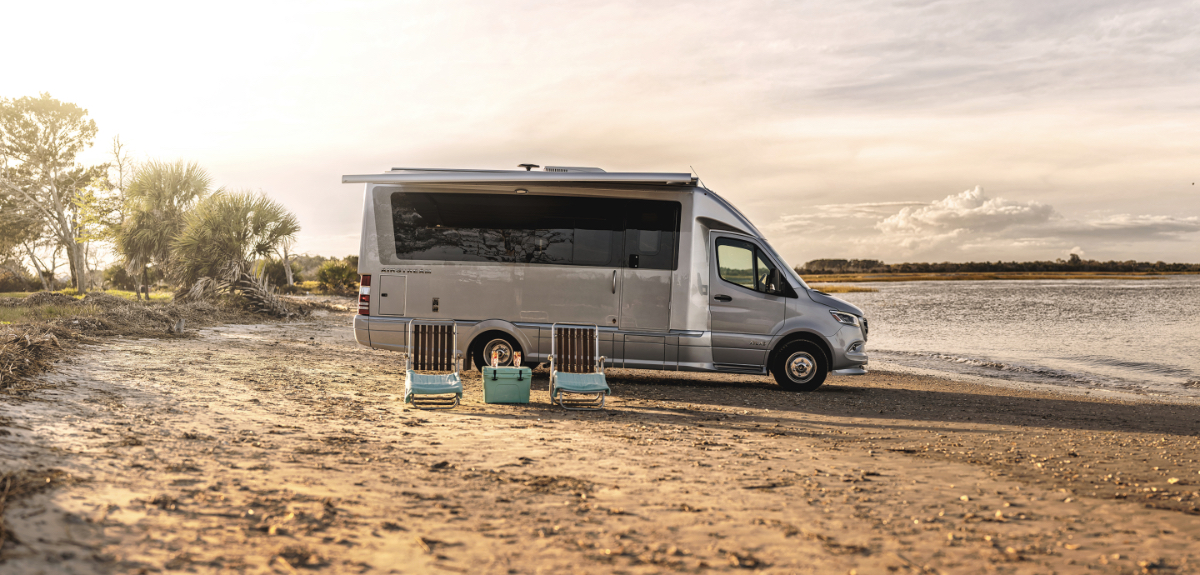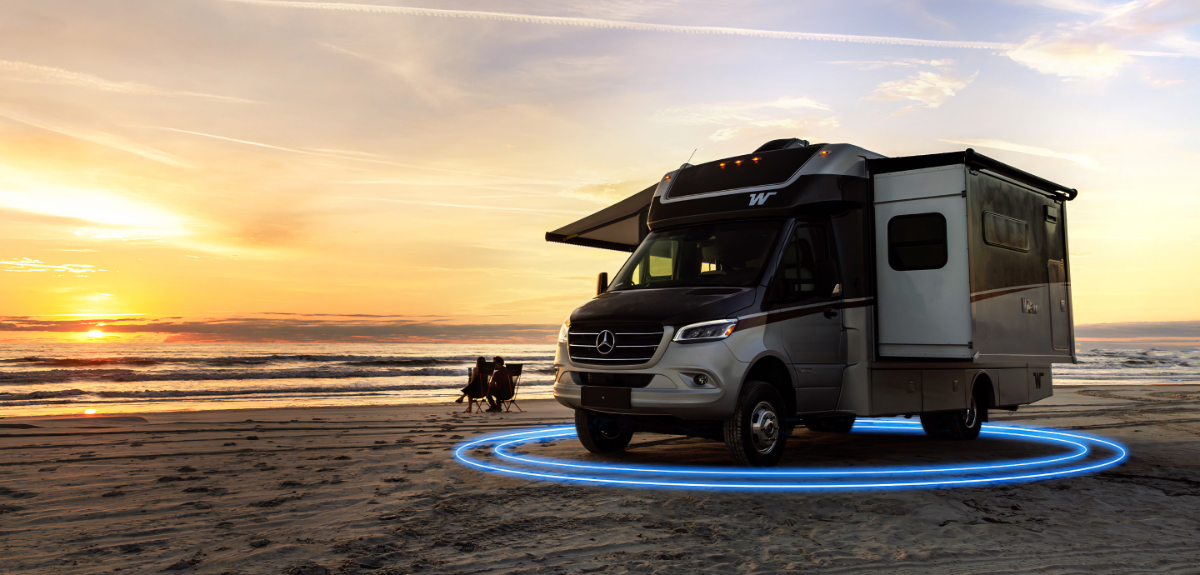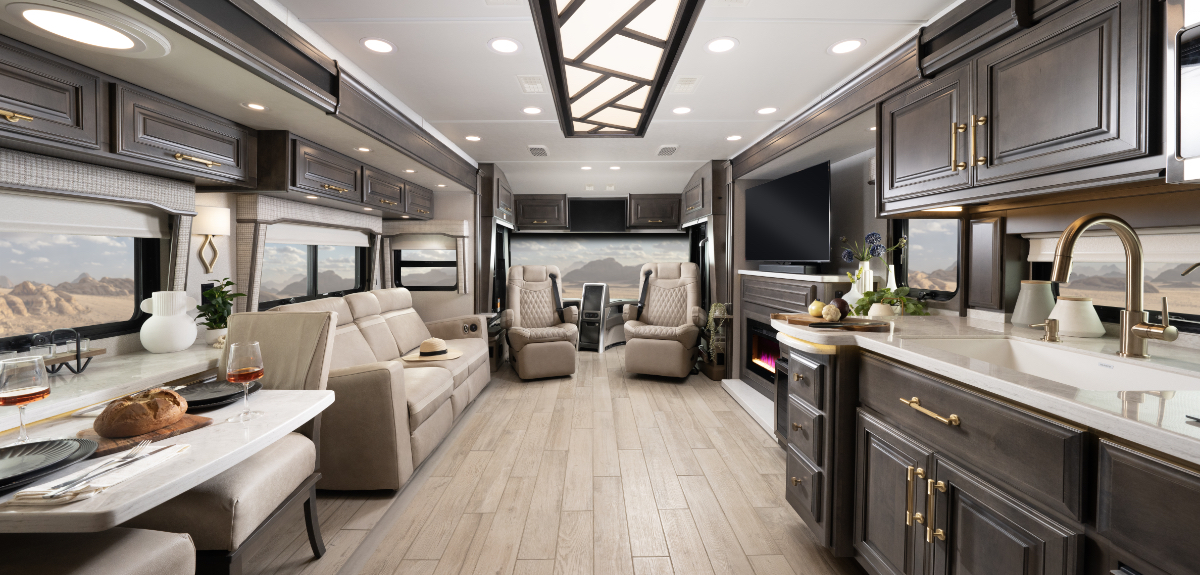What Does It Mean to Have A Solar-Ready RV?
Defining ‘solar ready’ and everything you need to know to before you plug in to solar power.
Image Caption:
When you are shopping for new or used RVs, it helps to understand what kind of power supply you will need. Traditional RVs have battery banks for DC power and accept either 30 amp or 50 amp shore power. But, if you like off-grid camping, don’t want to rely on plugging into shore power every few days, or simply want to be more environmentally conscious with your next RV purchase, having a solar-ready RV might be for you.
What is A Solar-Ready RV?
When you’re looking through the features of many modern RVs, you will probably run across the term ‘Solar Prep.’ This means that the RV is wired for solar power, but it doesn’t necessarily mean that it has panels, an inverter, and a sufficient battery bank already installed. To be clear, ‘solar-ready’ and ‘solar prep’ mean the same thing. There are three different wiring configurations on solar-ready RVs. You will either find that your RV comes with a three-port or single-port roof cap or a wall-mounted port on one of the sides of the rig.
Benefits of A Solar Ready RV
If you are wondering whether it is worth your time to worry about having an RV that is ready for solar panels, here are a few of the benefits to consider:
- Increased RV Battery Lifespan
- Reduced Need For ‘Dirty Energy’
- Decreased Generator Run Time
- Prolonged Boondocking (Off-Grid Camping) Ability
- Added Energy Source
All of these benefits can lead to a more enjoyable RV experience. In other words, you will spend less time trying to conserve energy and adapt when you can’t run certain appliances. That means more time enjoying RV living on your terms.
Is There an Industry Standard for Solar-Ready RVs?
Unfortunately, each RV manufacturer gets to choose how they pre-wire their RVs for solar installations. As a buyer, this means you will need to do additional homework to understand how each manufacturer wires the solar prep for their models.
As you dive in, you will quickly realize that some manufacturers care a lot more about the quality of their solar wiring than others. Some go so far as to complete the job to a standard that basically allows you to plug-and-play with compatible solar panels.
Others seem to only care about doing enough to be able to advertise that their rigs are ‘solar-ready.’ In these cases, you can probably guess that their lack of attention creates more harm than good.
The better manufacturers include full wiring and ‘the rest’ simply install wiring from the roof or wall-mounted ports to the battery bank. RVs with full wiring include a compatible inverter and charge controller that allows you to pull energy directly from your solar panels to use with different RV appliances.
RVs that are only wired from the ports to the battery will be capable of trickle charging only. Your panels will keep your onboard batteries charged when you aren’t plugged in or running your engine. But, you will only be able to use the appliances that are capable of running off of your RV’s existing battery/inverter setup.
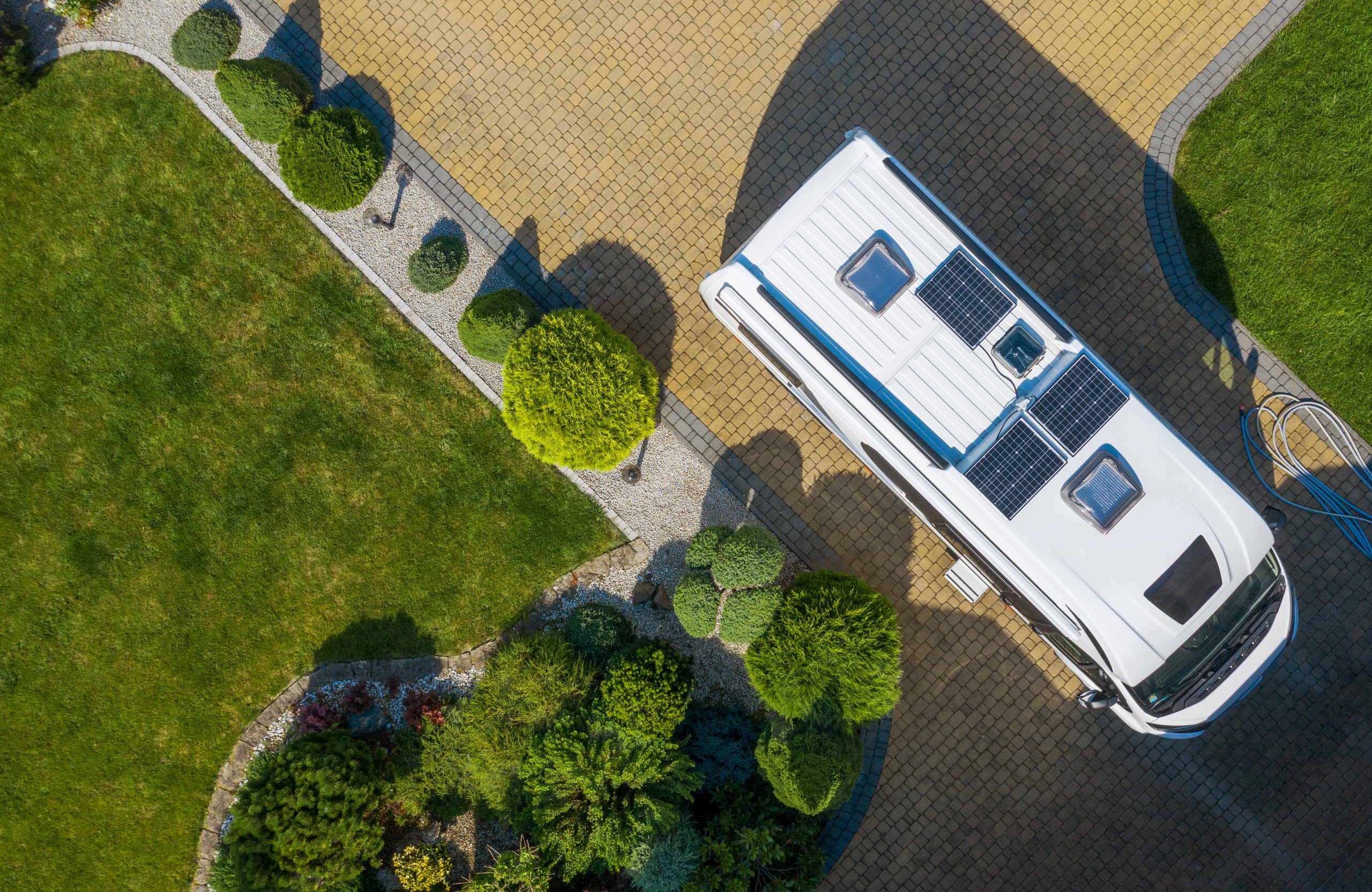
Solar power is a great way to have electricity while dry camping or boondocking (image Getty).
Who Makes The Ports on Solar-Ready RVs?
This is where things get a little tricky. In many cases, the solar-ready sticker on a new RV means that a company that sells solar technology has partnered with (and paid) the RV manufacturer to install their plug (and their plug only) in the manufacturer’s RV models. Why would the solar panel company pay to have their plug installed? Because if you read the fine print on that shiny ‘Solar-Ready’ sticker, you are likely to find a strongly-worded warning message that cautions you to use to use the plug only if you buy and install that same company’s solar panels. So, they make the upfront investment to get their proprietary plugs installed in hopes that their phone will eventually ring with RVers that want to complete their solar installation on the other end.
Do You Have to Use Solar Equipment from the Port Proprietor Only?
The good news is that buying a solar-ready RV with a port from a certain solar company doesn’t lock you into using their solar equipment to complete your solar installation. There are many portably and permanent solar panel installations that will likely work with the port on your RV.
Plus, you always have the option of bypassing the original port altogether if you find a solar company that provides panels and a battery bank that you really like (and it’s not compatible with your existing port).
Can I Install Solar Panels Myself On a Solar-Ready RV?
Absolutely! Just do your homework, and make sure that you wire your panels into the system correctly. If you are installing permanent, roof-mounted panels, you will also need to make sure your mounting locations are solid enough to hold the panels. Then, you will need to properly weatherproof any holes you drill into your RV’s roof to avoid future leaks.
While there is a lot to learn about installing solar panels on a solar-ready RV, one key term to understand is polarity. In layman’s terms, polarity refers to the electrical current flowing properly from panels to battery and then from battery to appliances.
Reverse (or opposite) polarity is no good for your solar equipment and can cause permanent damage. Fortunately, the best solar products on the market these days include polarity protection that essentially protects you from yourself.
Before you Wire Your Solar Panels
When you are wiring your solar panels into your RV’s electrical system, you will need to ensure that the positive lead coming from your panels is wired to the positive terminal on our battery. The same is true for the negative lead and negative terminal.
In many ways, this is the same as connecting jumper cables to a car battery. If you cross the wires and connect them incorrectly, the best case is that nothing happens. The worst case is that you fry the battery, the cables, and potentially other sensitive electronic equipment.
While wiring your solar panels correctly isn’t rocket science, it can be useful to hire a trained RV electrician to help with the install if you are feeling nervous about setting it up correctly.
At the end of the day, that solar-ready RV sticker really doesn’t mean all that much. It shouldn’t be a huge selling point when you are buying a new RV because there are many ways to adapt and customize your ideal solar installation down the line.

